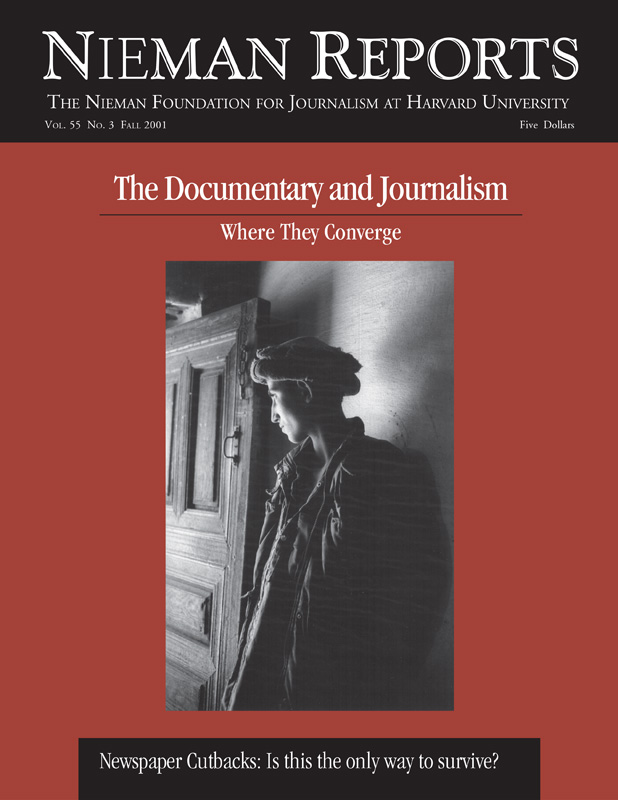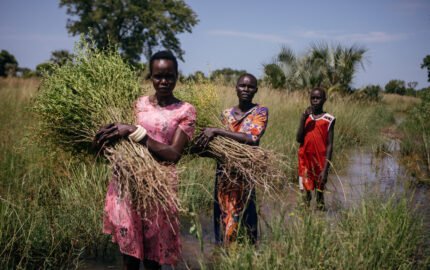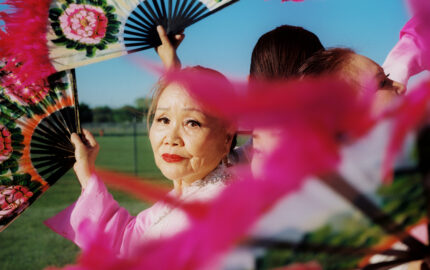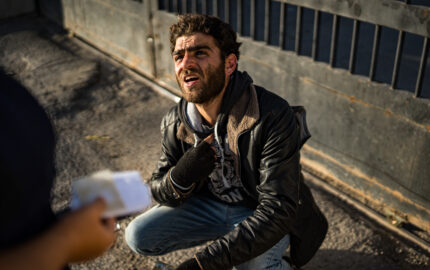
My partner Renner Wunderlich and I approach the documentaries we produce and direct from a position of advocacy. Often a film idea begins as a roaring argument related to an issue that one or the other of us has been committed to either as an activist or supporter. We are not journalists, but what we produce arguably overlaps, in some respects, with the ways in which reporters and producers find and tell stories that touch on important issues of our time.
It was during the 1970’s that Renner and I began producing and directing documentaries and public affairs programming for commercial television. It was a time when women were active in building a “movement,” a time of anti-nuclear demonstrations and draft registration opposition. For us, there seemed too wide of a chasm between what we saw going on around us and what was considered “acceptable” television programming. We both quit our jobs and founded a nonprofit organization whose mission was essentially to create independent media that gave voice to opinions, ideas and groups that were ignored, misrepresented or trivialized by mainstream media.
We were also inspired by the “direct cinema” movement from the Massachusetts Institute of Technology to create work that did not have the ubiquitous narrator, the person who told you what to think or who neatly framed the discussion in a “balanced” dance of pros and cons. This approach acted as if all questions had only two equally valid perspectives, as if very limited controversy needed to be resolved in a bicameral way. We wanted to create documentaries that challenged people to argue and express their points of view rather than passively receive information, believing that the controversy had been delineated, and then simply choosing one side or the other. We also unconsciously wanted to reproduce the far-reaching, vociferous arguments, often from many perspectives, that were part of our own learning process about critical social issues.
As we set out to do our first independent film, I was becoming interested in the growing opposition to radical mastectomy, the lack of adequate medical research on women, over-medicalized childbirth, demeaning advertising in medical publications, unnecessary hysterectomies, and in the growth of women-controlled feminist health centers. All of these interests coalesced in our documentary in an exploration of the women’s health movement; our clear intention was to give “voice” to this nascent movement.
As a journalist might, we spent a lot of time researching and discovered groups engaged in similar but mostly unconnected activities. A common thread among those people we interviewed was their resistance to patriarchal medical practices. While we agreed with this sentiment (and wanted our viewers to feel the same way), frequently we decided not to include commentary by those whose research could not be independently verified.
Another journalistic approach might have been to document the absence of supporting evidence among the groups we, in the end, didn’t include, but our belief was that there was already a great deal of discounting of the women’s health movement, largely backed by the mainstream medical profession. What we saw as our mission was to document the serious and increasing efforts of women to regain control of their bodies from powerful forces within the medical community.
“Taking Our Bodies Back: The Women’s Health Movement,” our first documentary, generated great controversy. It was disqualified from the American Film Festival because members of the medical category jury believed that challenging radical mastectomies was promoting dangerous medical advice. It was not shown in medical schools and hospitals outside of coastal urban areas, but its distribution was supported by the Boston Women’s Health Book Collective, authors of “Our Bodies, Ourselves.” They gave us their mailing list with the names of organizations that purchased multiple copies of the book, and we used it to get out word of our film.
Often our topics emerge out of our everyday experiences, as well as our curiosity. Our 1982 film, “Pink Triangles,” about homophobia, emerged from an extended family argument about lesbians and gay men. Renner and I were surprised to hear otherwise “progressive” people feeling perfectly okay about labeling gays “abnormal,” a term they would have been uncomfortable applying to other social groups. This seemed a useful topic to explore. We began our usual research process seeking out educators and activists engaged with this particular issue. We then decided to create a nine-member “collective” of lesbian, gay, bisexual and straight men and women to produce this documentary about homophobia.
In the past, Renner and I have been solely responsible for both the content and form of our work, but in the spirit of this project we believed the subject would be best served by opening the process to people with direct experience. For a year we met weekly and divided up the research. By consensus, we came up with a rough plan of what aspects of homophobia were important to include, then agreed on potential interviewees and image segments. After film was shot, we reduced the transcript to file cards and as a group arranged and rearranged the sequences. Even though this process took six months, it was the only way all nine of us could participate in the editing because there were too many of us to use the small film-editing table.
Renner and I were the only members of the group who had any prior filmmaking experience, and often the group deferred to our ideas about film subjects, interviewing and editing. But we’d never been on the receiving end of homophobia and deferred to others’ ideas about the relative importance of particular issues, the credibility of interviewees, and the significance of the statements they made. We loved this collective process and sought it out again when we produced other films.
“Defending Our Lives,” our 1993 documentary about the magnitude and severity of domestic violence, began as a request from Stacey Kabat, an advocate for the victims of domestic violence. Stacey and I were part of a women’s organization, and she told me about her work at a local prison. She had found a group of female inmates who were incarcerated for killing their abusers, and she wanted some taped interviews from them that she could send to a national conference on domestic violence. She thought that this was important because domestic violence organizations were not particularly receptive to hearing about these women. Cases like theirs generated a great deal of controversy even within women’s advocacy organizations.
Renner and I went to the Massachusetts Correctional Institution at Framingham to make an unedited tape for this conference. We left knowing that we had to make a film about these women’s stories and about how severe a problem domestic violence is. Stacey became a co-producer and co-director with us, and she went on to found an organization that worked actively for the release of these incarcerated women. Using a human rights model, she also began to document, on a regional level, the extraordinary number of women who were killed by their abusers. Renner, Stacey and I clearly wanted to support the efforts to reduce domestic violence. But others who shared these goals had questions about applying the idea of self-defense to the actions of women who killed their abusers.
Debate raged within our production group as well. Was there such a thing as justifiable homicide? Did the women we were about to interview believe their lives to be in danger and felt they had no other option but to kill? Was battered woman syndrome a reasonable legal option? Or should the focus be self-defense? Most important, how did this relatively small number of women who killed their abusers relate to the thousands of women and family members who were being killed every year by batterers?
We spent a great deal of time with each woman and independently investigated what she said. No academic or legal experts were asked to comment in the film on their innocence or guilt. Though we had to edit many hours of interviews into a 30-minute film, we did not cut out sections that would reflect poorly on their credibility. Our editing goal was to convey to the viewer the essence of their experience.
As expected, this documentary also generated controversy. Despite winning an Academy Award, “Defending Our Lives” was rejected for broadcast by PBS because “one of the members of the production team [Stacey] was a member of an advocacy organization [Battered Women Fighting Back, composed of Stacey and eight incarcerated women] who had a vested interest in the subject of the documentary.” Of course, the irony of this is that PBS airs countless programs produced by former and future industry consultants and political operatives. I believe what PBS really objected to was the fact that our bias was not hidden behind a careful selection of experts and a “pro and con” narration. What we thought, as its producers, was up-front and obvious for the viewer to support or reject.
Bias in mainstream media is something we’ve addressed in a series of documentaries. “Beyond Killing Us Softly,” produced in 2000, explores the connection between negative representations of women and girls in the media and their sense about themselves, their body image, and possible connections to violence against women. Clearly, this film was not about presenting the good and bad and arriving at some kind of consensus opinion. We were tackling head-on what we saw as embedded ideology in media images, then commenting on them from the perspective of recent writings about girls’ and women’s psychological development by researchers such as Drs. Carol Gilligan, Valerie Batts, and Catherine Steiner-Adair.
We are currently in production on a documentary about rape. Our approach is to explore new developments, such as the first-ever classification of rape as a war crime by the International Criminal Tribunal in The Hague. Rape as a crime against humanity has now found acceptance when rape is committed as an act of war. But what about rape by an acquaintance or the rape of a child by a family member? As in the past, we will do the research necessary to make certain our potential subjects are credible and honest. Once they pass that scrutiny, we will not alter their stories to make them more believable or appropriate.
As with all of our documentaries, no one watching will emerge from the experience not knowing our viewpoint as producers and as advocates. If objectivity and balance are the test of journalism, then our work doesn’t qualify. But if fairness and solid reporting are the benchmarks of journalists’ work, then our work as documentar-ians has a home in this community of those whose job it is to question what we see and hear around us.
Margaret Lazarus is an independent documentary filmmaker who works in Massachusetts. The films she has produced and directed with Renner Wunderlich include, among others, the “Killing Us Softly” series, “Strong at the Broken Places” (1998), and “Defending Our Lives” (1993).


